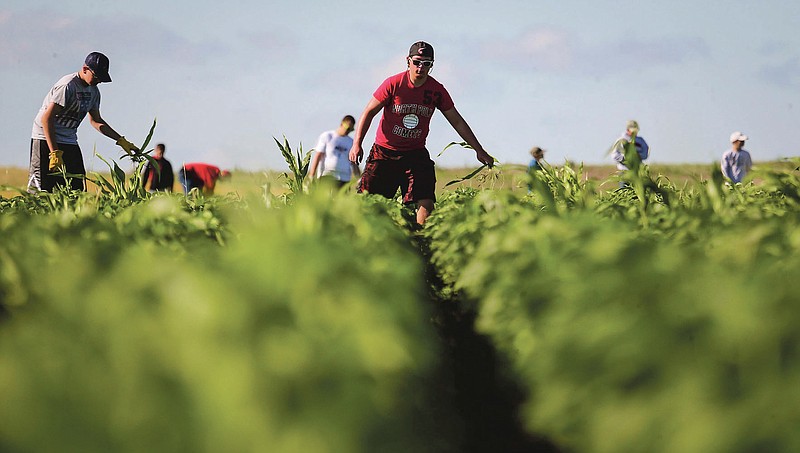New editions of the publications from the University of Arkansas System Division of Agriculture are now available and offer the latest research-based recommendations for managing pests, weeds and diseases in row crop agriculture as well as fruit, vegetable and garden production.
"The MP publications are used by everyone in any agricultural commodity or where pesticides are used," said Victor L. Ford, associate vice president for Agriculture and Natural Resources with the Cooperative Extension Service, part of the Division of Agriculture.
The 2021 publications include:
• MP44 -- "Recommended Chemicals for Weed and Brush Control"
• MP144 -- "Insecticide Recommendations for Arkansas"
• MP154 -- "Arkansas Plant Disease Control Products Guide"
Printed copies of the guides are available free at county extension offices. Digital copies are available online at www.uaex.edu/publications/new.aspx, according to a news release.
"MP" stands for "miscellaneous publication." More than 20,000 copies of the 2021 guides have been distributed to county extension offices across the state.
"These recommendations are based on solid research and are the reliable sources of information for Arkansans. In addition to traditional pesticide applications, there are often organic recommendations," Ford said.
MP144, "Insecticide Recommendations for Arkansas," is extension's most-requested entomology-related publication, said Glenn Studebaker, extension entomologist for the Division of Agriculture.
"The publication gives recommended treatment thresholds as well as information on pesticide safety and important label requirements.," Studebaker said.
The guides are updated annually. The earliest version of MP44, "Recommended Chemicals for Weed and Brush," on file with the Cooperative Extension Service dates back to 1961.
"The 2021 MP44, "Recommended Chemicals for Weed and Brush Control," is a one-stop shop for all you need to know about herbicides, applications, and the most up-to-date research-supported weed control recommendations for Arkansas," said Tommy Butts, assistant professor and extension weed scientist. "It covers all weed control areas including row crops, pasture, turfgrass, horticulture and aquatic weeds. This publication can help any farmer, gardener or landowner with their weed control needs."
The "Arkansas Plant Disease Control Products Guide" -- or MP 154 -- contains information useful to both commercial producers and homeowners, extension plant pathologist Travis Faske said.
"The guide includes a list of fungicides and nematicides registered for use in Arkansas that are used to control diseases of row (field) crops, vegetables, small fruits, turfgrass and ornamental plants," Faske said. "For some of the major row crop diseases, the book includes information on fungicide efficacy, fungicide timing, and steps to mitigate the development of diseases that are resistant to fungicides."

